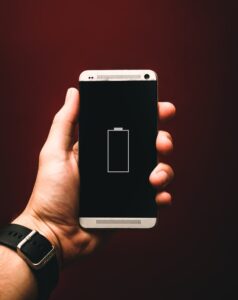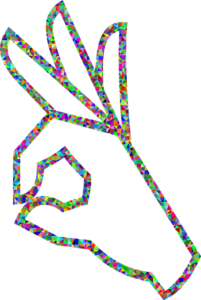So you’ve heard of NLP (Neuro Linguistic Programming) and you’ve also heard there is a supposedly powerful technique called “Anchoring” that can act like an instant trigger and transform a persons knee-jerk reaction to a stimulus into whatever one desires…but Does NLP Anchoring work live up to it’s claims?
Sounds too good to be true right!?
So, how much of this is for real and how much is just plain old BS?
In this post I will get to the bottom of this question by not only sharing the results of my extensive research on the matter but also my personal experiences with Anchoring both as a patient myself and as a practitioner with my own clients when I use NLP for Performance Coaching.

BACKGROUND
Let’s set the scene here a little and discuss just where anchoring came from and why it’s believed to work.
Anchoring is a technique which is basically doing with humans what Russian physiologist, Ivan Pavlov, did with dogs during his experiments in the 1890’s. If you don’t know what I’m talking about I’ll explain briefly what those experiments consisted of…
Pavlov wanted to see when the dogs started to drool in response to food being placed in front of them. Basically what he found was that any actions that the dogs eventually associated with the whole process started them drooling before the food had even been placed in front of them (for example: whenever they heard the assistants footsteps approaching).
Pavlov realized the significance of this and was able to associate further objects (such as a bell) and events with food in the dogs minds and thus trigger the same drooling and expectation of food in the dogs. In NLP lingo we call this thing which activates an automatic response to a stimuli an ANCHOR.

Now just imagine if you could give yourself a shoot of confidence, happiness, relaxation, or whatever it is you desire, on command in the same way that the dogs state of mind immediately switched when they were triggered by an anchor Pavlov had created.
That’s the aim behind an anchor…. The question is “Does NLP Anchoring work with humans like it did with those dogs?”
Bandler and Grinder (the founders of NLP) certainly seemed to think it could and were heavily influenced in using “Anchoring” as an actual technique on humans, and including it in their NLP classic “Frogs into Princes” book, from legendary hypnotherapist Milton Erickson. It is well-known they were inspired by just how effectively Erickson could use this technique on his patients, especially through the audio modality. (To find out more about Bandler and Grinder check out this great post by Mike Clayton by clicking… HERE)
Interesting Fact: The Anchor technique is also a favourite among golfers and is just one of many NLP Techniques for Golf that can help make a huge difference to your handicap.
EXPERIENCES
My own personal experiences with Anchoring have been varied.
The first time I used this technique on myself I tried to give myself a shoot of energy and it seemed to work. I followed the instructions I’ve listed below (under the “How do you do it?” heading) and I was a bit impatient I have to say.
After the 3rd repition of setting the anchor I did the last two very quickly without much emotional attachment. Anyways, the following day I went for a run and when I needed the energy I made the anchor movement (squeezing my fist) to see if it would work and it did! I actually felt like I had a sudden burst of energy and could run more without a problem.
But, a voice inside my head was questioning it… “Is this just a placebo effect?” it was asking.
Maybe I was just kidding myself into feeling that because I wanted it to work. However, if it has the same effect either way who cares if it’s a placebo effect or not right!?
I kept using the anchor during my run but it seemed to wear off by the end of it and I had already convinced myself it hadn’t worked so obviously it stopped being effective.

I gave up the idea of Anchoring for a while and if asked the question “Does NLP Anchoring work?” I would have said “NO” but after more research and seeing just how important it was to take the time out to really experience the emotions fully while setting the anchor I decided to try one more time.
This time I set it 5 times and took my time with it to really experience the emotion of happiness!
I set an anchor of pushing my thumb and index finger together when I experienced this really joyful feeling and was feeling pretty confident it had gone better this time.
One other thing I did to really fix this emotion to the trigger signal with my fingers was over the next days when I felt happy in my day -to-day life I’d also make the same signal with my thumb and index finger to further cement the association between the action and the emotion of happiness.
Soon after, the big day came where I got to try it out for real!
My wife and I had to do the shopping at our local supermarket… Just so you know, I hate shopping! So when we rolled up in front of supermarket I made the anchor sign with my fingers and I started smiling. It wasn’t even a conscious effort and I actually felt great!
We started doing the shopping and I didn’t even mind, I just had this goofy smile on my face and was happy to go with the flow. From that moment on, whenever I felt I needed a boost of positivity I’d push my two fingers together and I’d feel good again.

This time around it seemed genuine and I just enjoyed the result and didn’t rack my head wondering if it was a true anchor that had been set or just my mind playing tricks on me.
I honestly felt happy and that was the desired result I had been going for so I chalked it off as being successful.
THE REAL DEAL
What I believe, from my own experiences and research, to be true is that NLP Anchoring does indeed work if you make a conscious effort to really feel the emotion you are imagining while attaching the anchor movement to it.
It also obviously helps to keep setting the anchor afterwards anytime you feel the desired emotion appear during your daily life.
The only disclaimer I will say is that after an extended period of not using this anchor it now no longer has that power for me which leads me to believe you have to keep the association fresh and try to keep practicing this anchor quite often and linking it to the feeling you wish to generate from it.

I am confident if I practiced this again I could set the anchor and emotion once more but as of yet I remain unconvinced it’s something that will last for long without a reminder.
THE BULLSH#T
Not all of the claims you may hear about the Anchor technique are true though (at least not in my experience).
Claims that once an anchor is set you will be able to use it to trigger the desired emotion forever are, in my experience, false unless of course there is a very strong emotional experience attached to it.
For example if a dog bites you and it’s a very terrifying experience in which the sound of it’s bark gets ingrained in your memory then perhaps hearing a dog bark in the future will send shivers up your spine and automatically trigger you to feel terrified.

However, trying to convey that same emotional experience whilst imagining a situation in your head can be more difficult to attach the same power to the anchor you are creating and therefore you’ll need to keep this anchor fresh and keep setting it over a period of time so it really does fix the connection between the action you choose and the emotion you desire.
HOW DO YOU DO IT?
If you really want to create a powerful anchor then try out this little experiment below and see how you go…
1. Imagine a time when you were really happy…
What made you happy about that moment?
How did you feel? (tell yourself the story in detail and picture it vividly)…

2. And when you are feeling at the peak of happiness…
I want you to press the thumb and middle finger of your right hand together
Now I want you to squeeze again but this time the feeling multiplies, the image in your mind of this happy moment also becomes closer and bigger.

3. Repeat this 5 times
Each time the feeling of happiness gets stronger and stronger on that second squeeze.
(This will condition your brain to associate the two squeezes between those two fingers as a trigger to feel happy)

If this process is done with enough emotion, detail, concentration and intensity then as you go about your daily life just by squeezing your fingers together twice you should be able to give yourself a natural boost of happiness.
To add further weight to the anchor make sure to repeat the same action whenever you feel happy during your daily routine as this will further associate those good feelings with this anchor.
This whole anchor process applies for any emotion you wish to possess on command, just switch the original memory recall from a happy moment to one where you felt confidence, motivation, relaxation or whatever takes your fancy and assign another type of anchor movement to it (could be tapping your shoulder or biting your lip or whatever you want).
DOES IT ACTUALLY WORK?
So now to answer the big question… “Does NLP Anchoring work or is it little better than plain old positive thinking?”
As you can see I’ve had different experiences with this technique and my conclusion is that it does indeed work but you’ll need to keep practicing it and associating the feeling you want to attach to the anchor you decide to use.

It wears off over time unless there is either a really strong emotional attachment when the anchor is set or there is constant reminding through practice.
I encourage you to try Anchoring out for yourself, using the exercise I described above, and have fun with it!
If you are still finding it hard to get the desired effect from the anchor technique then make sure the 3 enemies on this list aren’t the root cause of the problem!
I would love to know how it goes for you so please let me know your answer to the question “Does NLP Anchoring Work for YOU?” in the comments below or by CONTACTING me directly.
I personally have a favourite use for the Anchor technique…. I use it to give me a boost of energy every time I’m doing a workout and I feel like I can’t go any further I use my anchor and I feel like I just became the Incredible Hulk!
We all have moments when we’d like an extra boost of something (confidence, motivation, happiness etc) so set your anchor, choose your moment and enjoy the results!
If you would like to learn more of these things for yourself and become an Internationally Certified NLP Master then click the link HERE to learn more about what I can honestly say is the BEST course I’ve ever done not just in terms of helping others but also helping myself!


Valuable information. Lucky me I discovered your site by accident, and I am stunned why this coincidence did not happened in advance! I bookmarked it.
Hi Mike! Great post! I’ve already tried it and it worked!! I thought it was gonna be more difficult but not at all! Thankss 😉
Great to hear it worked for you Sophie 🙂 Thanks for the comment!
Hi Mike! Great post! I’ve already tried it and it worked!! I thought it was gonna be more difficult but not at all! Thankss 😉
Great to hear it worked for you Sophie 🙂 Thanks for the comment!
Thanks Mike!! 🙂
My pleasure Libby! Let me know how you go with it 🙂
Thanks Mike!! 🙂
My pleasure Libby! Let me know how you go with it 🙂
If i can be happy whilst doing the shopping then i will have attained true happiness!! As always a great read – thanks Mike
Haha totally agree Dave, it’s like having a superpower!
If i can be happy whilst doing the shopping then i will have attained true happiness!! As always a great read – thanks Mike
Haha totally agree Dave, it’s like having a superpower!